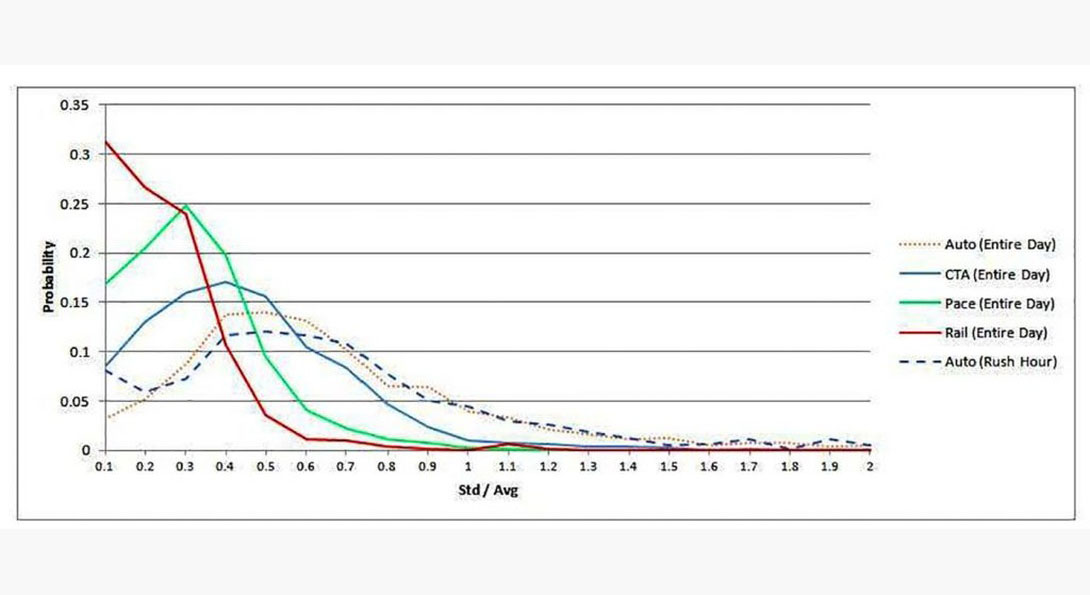Research Project
Mode Choice Modelling Using Personalized Travel Time and Cost Data

The study reveals how some alternative modes’ travel information are limited or unavailable in the traditional travel time skim matrix, which must be taken in to account in our mode choice models. Also, statistics regarding available alternatives and the constraints people encounter when making a choice are presented and considered accordingly. In order to examine the importance of accurate alternative information for mode choice modeling, two mode choice models were then developed for comparison
- Principal Investigator
- Mohammadian, Abolfazl (Kouros)
- Research Area(s)
- Data Development
- Mobility
- Funding Source
- Illinois Department of Transportation
Abstract
Microsimulation based frameworks have become very popular in many research areas, including travel demand modeling where activity-based models have been in the center of attention for the past decade. Advanced activity-based models synthesize the entire population of the study region and simulate their activities in a way that they can keep track of agents’ resources as well as their spatial location. However, the models that are built for these frameworks do not take into account this information sufficiently. This paper describes the importance of accurate information by analyzing a travel survey and proposes a methodology to generate the actual alternatives that individuals had when making their trips using Google Maps API and RTA’s Goroo TripPlanner. Download the "Mode Choice Modelling Using Personalized Travel Time and Cost Data" report.